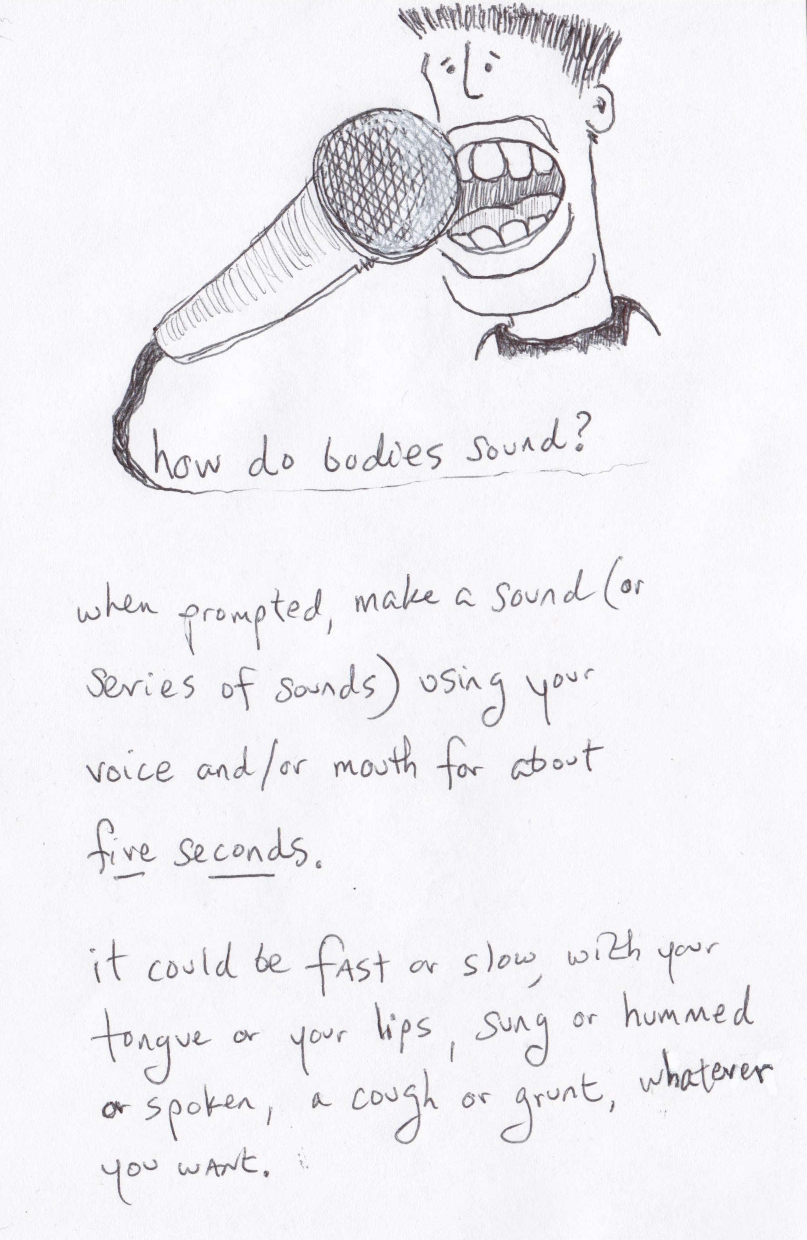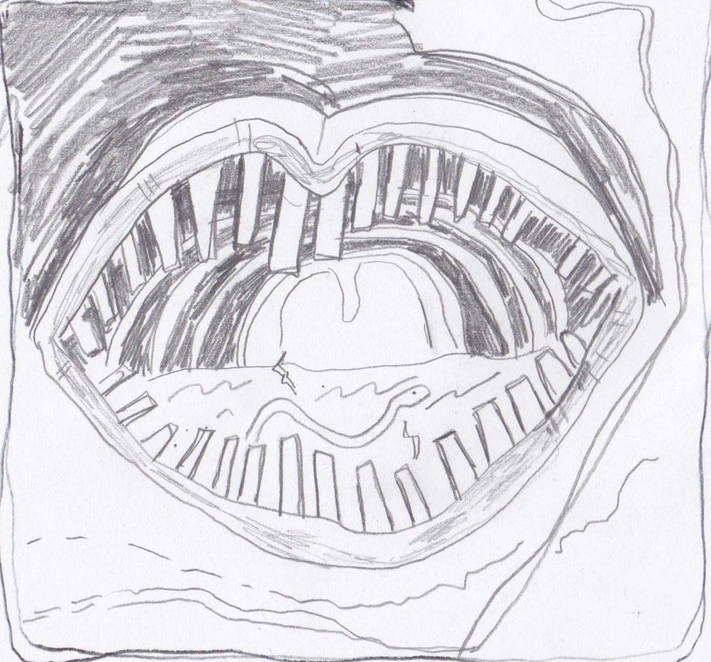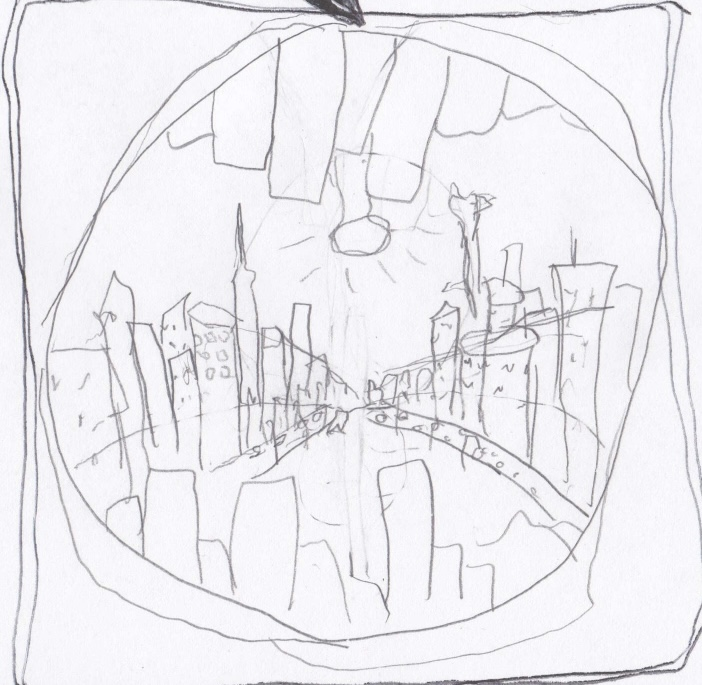The Recorded Body is a process-based sound art project about bodily iteration and interdependence. It uses participatory performance and embodied listening techniques to explore the following questions: How do we recognize each other's bodies? What is contained by the body, and what is outside its bounds? When does a body need or necessitate other bodies?
Aesthetic departure point
From Disability Aesthetics by Tobin Siebers, pages 25–26:
"Aesthetics is the domain where the sensation of otherness is felt at its most powerful, strange, and frightening. Whether the effect is beauty and pleasure, ugliness and pain, or sublimity and terror, the emotional impact of one body on another is experienced as an assault on autonomy and a testament to the power of otherness. ... People thought to experience more pleasure or pain than others or to produce unusual levels of pleasure and pain in other bodies are among the most discriminated against, actively excluded, and violated on the current scene, be they disabled, sexed, gendered, or racialized bodies. ... Oppression is justified most often by the attribution of natural inferiority—what some call 'in-built' or 'biological' inferiority. ... The representation of inferiority always comes back to the appearance of the body and the way the body makes other bodies feel. This is why the study of oppression requires an understanding of aesthetics—not only because oppression uses aesthetic judgments for its violence but also because the signposts of how oppression works are visible in the history of art, where aesthetic judgments about the creation and appreciation of bodies are openly discussed."
Isidore:
S0 (6)
S1: S0 pitch down, stretch x2
S2: S0 reverse, stretch x4
S3.1: S1 tones (gs12)
S3.2: S0 pitch up, stretch x8, tones (gs12)








